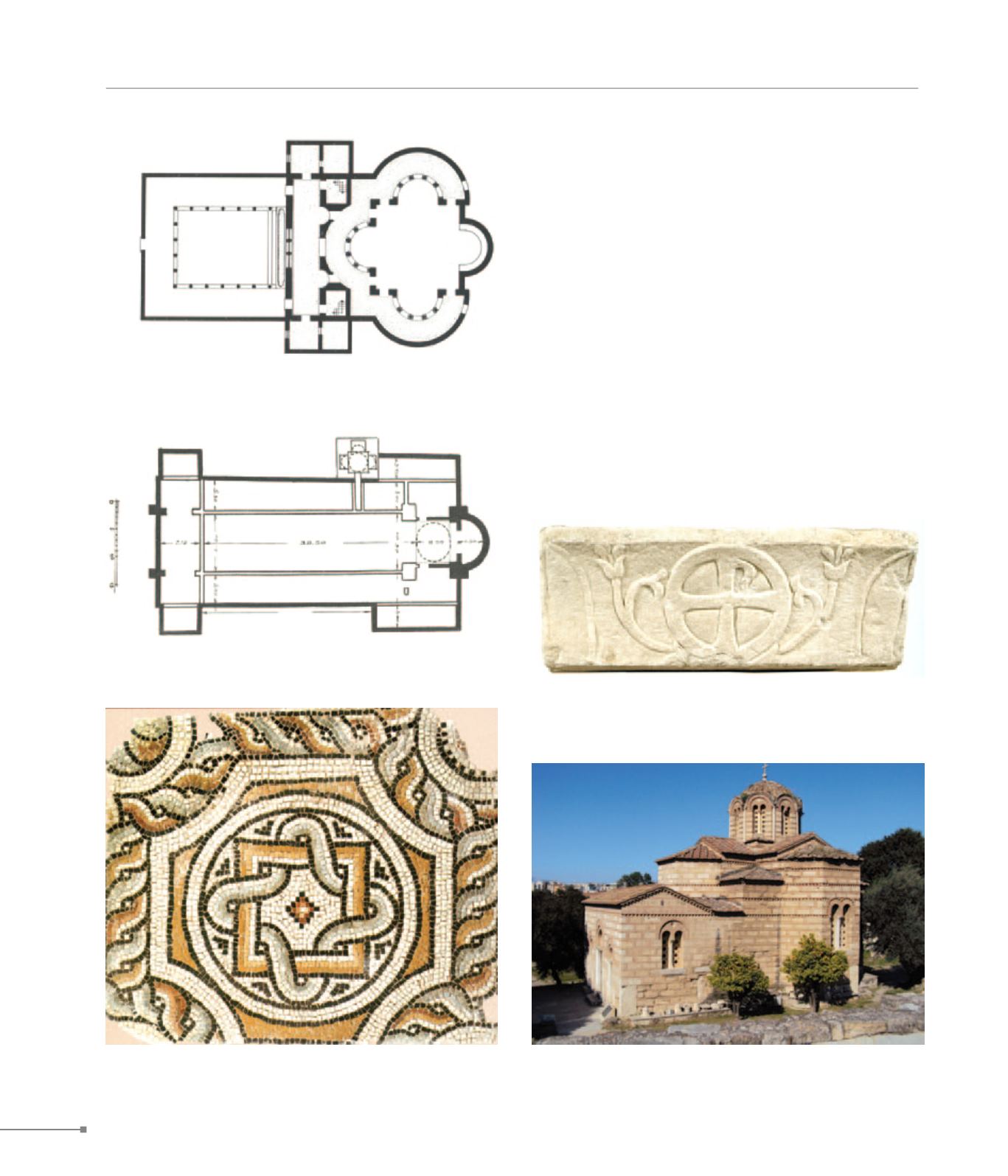
Athens. Athenai.
Athens. Athenai.
CENTRAL GREECE
196
to Athenian martyr Leonidis. It was a three-aisled church with
transept and narthex and included an earlier martyrium. In sub-
sequent years basilicas were built in the area of the Olympieion,
at the National Garden, at Aghia Aikaterine in Plaka, at Monas-
tiraki (Saint Philip, Aghia Thekla, Saint Thomas), and at Aghios
Dionysios in Kolonaki, where Bishop Klematios’s funerary stele
was found.
Additionally, from the mid-5th c. ancient religious structures
were sanctified and converted into Christian churches, starting
from the Asclepieion on the S slope of the Acropolis, where a
three-aisled basilica with narthex and atrium was constructed.
Towards the end of the 5th c. the Parthenon became a three-
aisled basilica whose apse featured sculptures strongly influ-
enced by ancient art. A century later, the Erechtheion was also
transformed into a basilica, followed by the Hephaisteion, which
was converted into an aisleless church in the 7th c. According
to archaeological data Athens expanded across the whole area
surrounded by the ancient walls, as well as outside the walls,
a fact attesting to its prosperity. The walls and the Late Roman
enclosure were repaired by Emperor Justinian circa 540, so that
257. Athens, Aghioi Apostoloi at the ancient Agora (Αθήνα, Άγιοι
Απόστολοι στην αρχαία Αγορά)
257. Athens, Klematios basilica, impost (Αθήνα, βασιλική του Κληματίου,
επίθημα)
257. Athens, Ilissos basilica, ground plan (Αθήνα, βασιλική του Ιλισσού,
ψηφιδωτό)
257. Athens, Ilissos basilica, ground plan (Αθήνα, βασιλική του Ιλισσού,
κάτοψη)
257. Athens, Tetraconch, ground plan (Αθήνα, το Τετράκογχο, κάτοψη)


